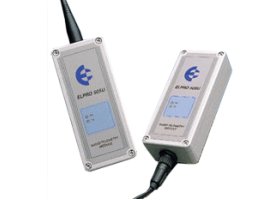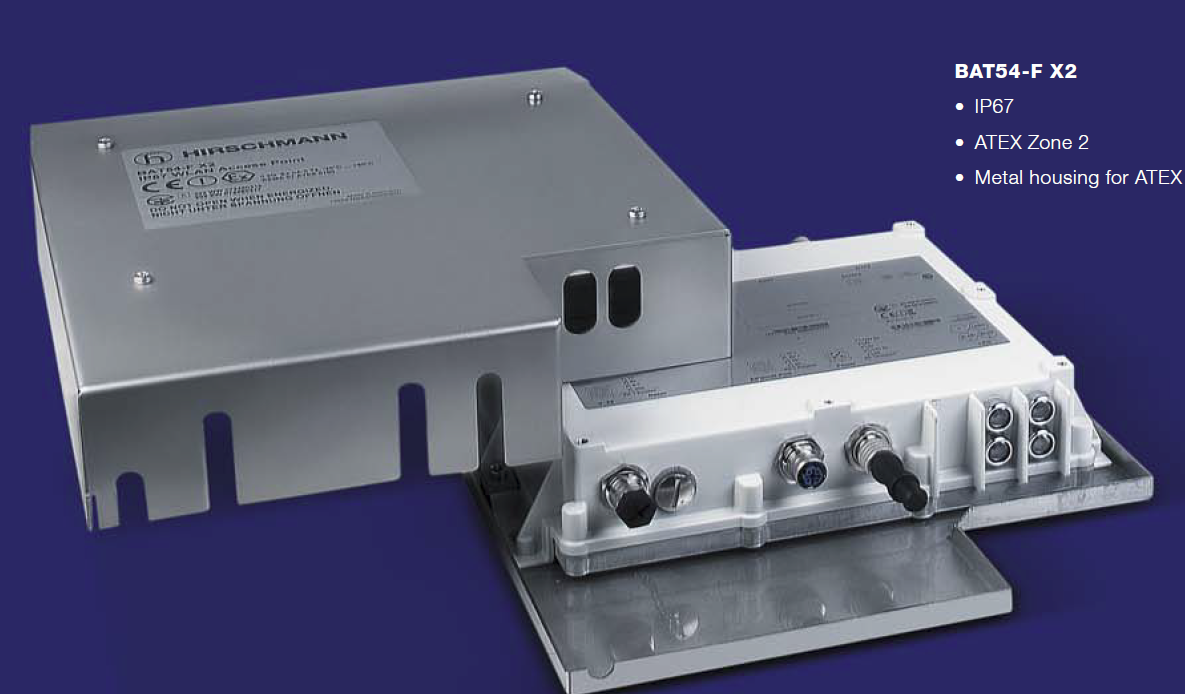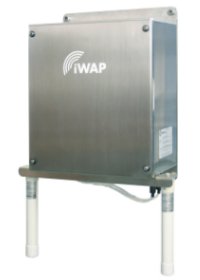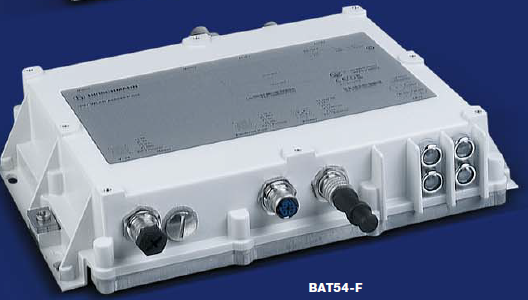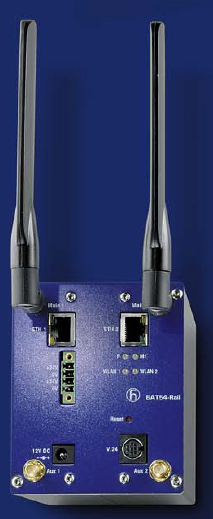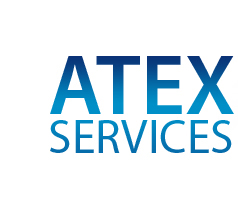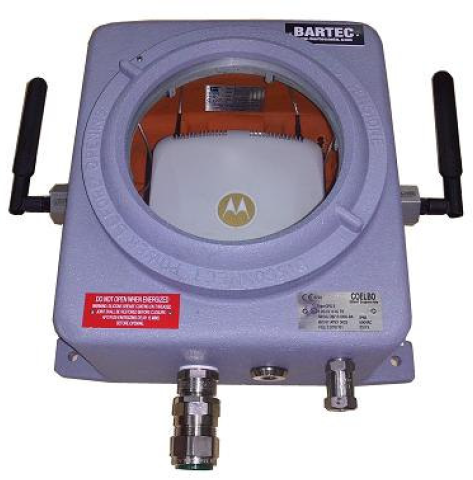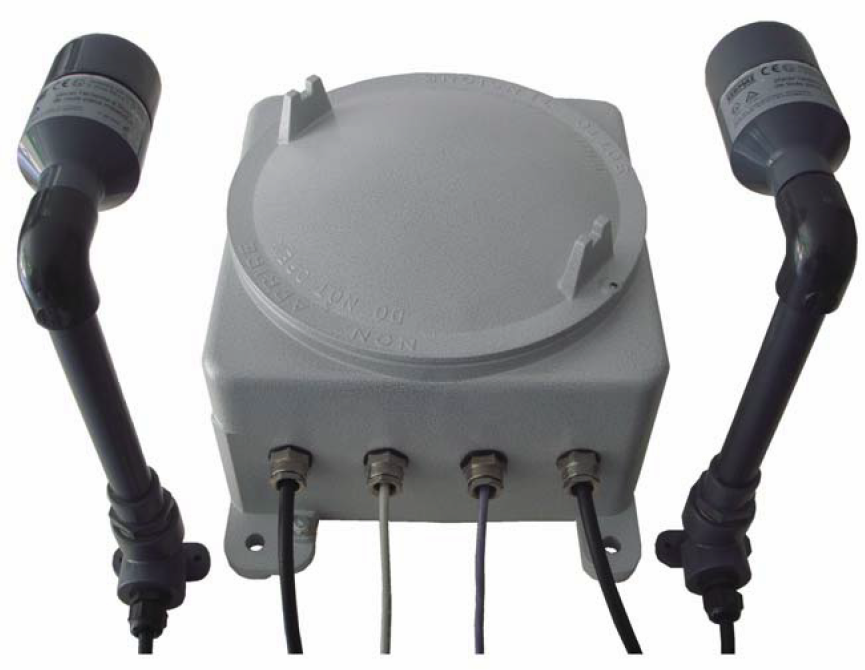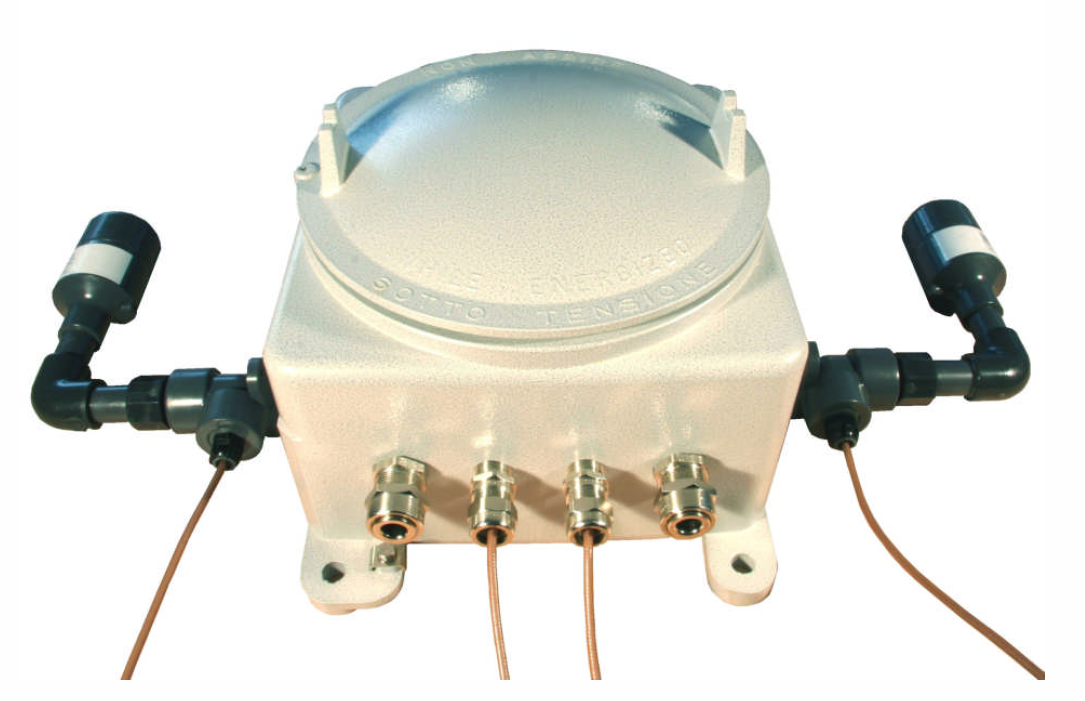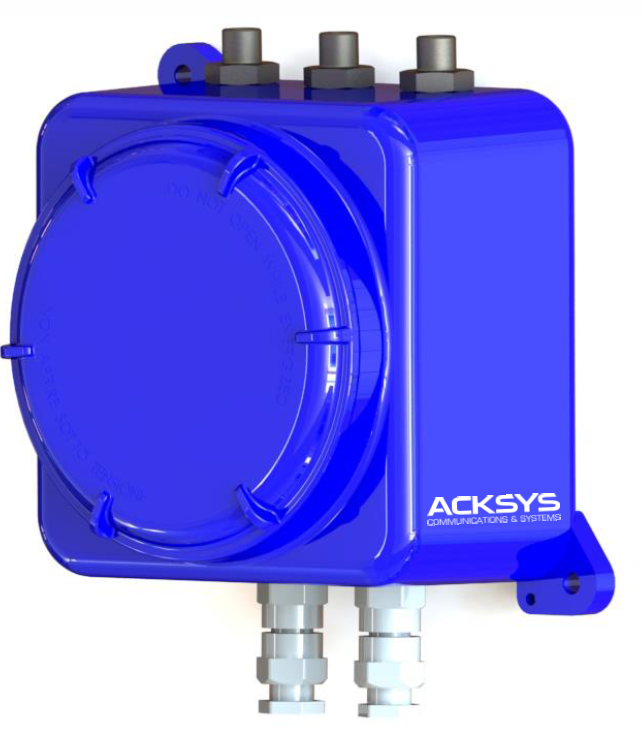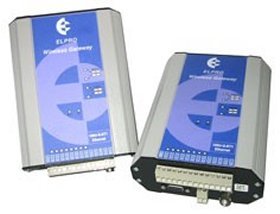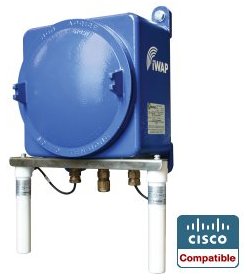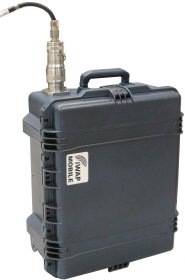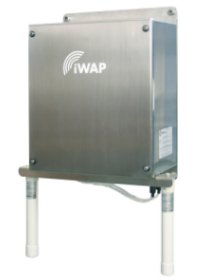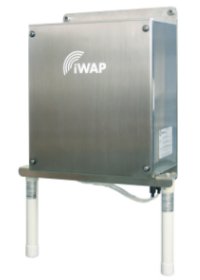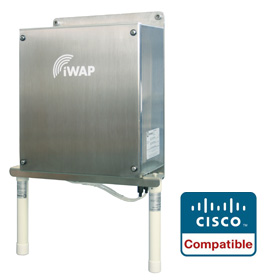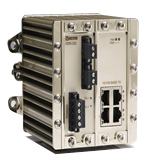Hirschmann expanded BAT family now covers the entire spectrum of industrial WLAN applications. The portfolio includes DIN rail configurations, rugged IP67 outdoor versions, and the new BAT 54-F-X2 which is Hirschmann first ATEX approved WLAN router. Hirschmann technology offers a number of different migration paths to reliable wireless networking. These solutions offer high availability and security as well as excellent investment protection. All of these great features are backed up by the expertise of the Hirschmann Competence center.
The BAT family is the ideal solution whenever you need high bandwidth, stable operation and high network security in an industrial environment. The application examples include mobile data communications on the factory floor or in the ware house, hardware mounted on a DIN rail in a control cabinet or networking under extreme outdoor conditions. Other examples include data comunications between a cable car and the top or bottom station, continuous low-cost data acquisition in wind farms to monitor turbine status, production support logistic systems and just-in-time component delivery.
- Windows management suite: LANconfig, LANmonitor, WLANmonitor
- Direct management from a web browser (HTTP, HTTPS)
- Command Line Interface : Telnet
- Always accessible over a serial interface
- Remote configuration using a serial or DSL modem
- Partial configuration of multiple devices using scripting
- WLANmonitor for user-friendly WLAN monitoring using rogue access point detection
- Monitoring of all Hirschmann access points and clients in one application
| Technical Data |
Description
|
Dualband ruggesdized Industrial Wireless access point LAN/Client with two independent radio modules with IEEE 802.11 a/b/g/h/i for installation in hazardous environment, IP 67 protection class, M12 Connectors and waterproof
|
Port Type and Quantity
|
2 x WLAN interfaces up to 8 SSIDs per WLAN interface, one LAN port 10/100 BaseTX, autosensing, Power over Ethernet according to IEEE802.3af |
Antenna connector
|
4 x N Type Jack antenna connectors |
| Range |
Up to 20 km with external antenna(depending on type of antenna, frequency range and data rate) |
| Data Rate |
54 Mbps according to IEEE802.11g (fallback to 48, 36, 24, 18, 12, 9, 6 Mbps, automatic rate selection), compatible to IEEE 802.11b (11, 5.5, 2, 1 Mbps, Automatic Rate Selection)
802.11 b.g compatibility mode, or pure g or pure b selectable, 54 Mbps according to IEEE 802.11a/h (fallback to 48, 36, 24, 18, 12, 9, 6, automatic rate selection)
Super A/G with turbo mode (108 Mbps), bursting, compression, fully compliant to ETSI requirements with TPC and DFS |
| Encryption |
IEEE802.11i/WPA2 with passphrase or 802.1x hardware accelerated AES, user authentication by 802.1x/EAP, or LEPs, IEEE 802.1x supplicant in client mode, WPA/TKIP, WEP, access-control lists, WLAN port and protocol filter,
RADIUS client and server, built-in firewall with QoS, port filter and protocol filter, IDS and DOS protection, PMK caching and authentication for fast roaming with IEEE802.1x |
Frequency modulation
|
2 independent radio modules each 2.4 GHz and 5 GHz: 2400 - 2483.5 MHz(ISM) and 5150 - 5750 MHz |
| Operating System |
LAN interface usable for simultaneous DSL-over-LAN, IP-Router, NAT/Reserve NAT (IP Masquerading) DHCP server, DNCP client, DHCP relay server, DNS Server, PPPoE client (incl, multi-PPPoE), PPTP client and server, NetBIOSproxy
DynDNS client, NTP, Port-Mapping, policy-based routing on basis of routing tags, tagging according to firewall rules, dynamic routing RIPv2, VRRP, Rapid Spanning Tree Protocol (IEEE 802.1w), ARP, Proxy ARP, BOOTP, DHCP, DNS, HTTP,
HTTPS, IP, ICMP, NTP/SNTP, NetBIOS, PPPoE(server), RADIUS, RIP-1, RIP-2, RTP, SIP, SNMP, TCP, TFTP, UDP, VRRP, VLAN with up to 4094 VLAN IDs for WLAN connections, 32 usably simultaneously dynamic VLAN tags for 802.1x-clients, integrated RADIUS server with IEEE802.1x/EAP authentication |
| Modulation |
22M0F7D(DSSS/OFDM) @ 2.4 GHz
20M0G7D(OFDM) @ 5 GHz |
| Receiver Sensitivity |
2.4 GHz 802.11b: -87 dBm @ 11 Mbps, -94 dBm @ 1 Mbps
2.4 GHz 802.11g: -87 dBm @ 6 Mbps, -70 dBm @ 54 Mbps
5 GHz 802.11a/h: -87 dBm @ 6 Mbps, -67 dBm @ 54 Mbps |
| Radio topology |
WLAN access point, bridge, router, point-to-point, client, client-bridge mode, WDS - Wireless Distribution System, fixed MESH with RSTP |
| Roaming |
Seamless handover between radio cells, IAPP support, IEEE802.11d Support, background scanning for rogue AP detection and fast roaming, support of IEEE802.11e (WME), preauthentication and PMK caching, with IEEE802.1x |
| Radio Power |
2.4 GHz 802.11b: +19 dBm @ 1 and 2 Mbps, +19 dBm @ 5.5 and 11 Mbps
2.4 GHz 802.11g: +19 dBm @ 6 Mbps, +14 dBm @ 54 Mbps
5 GHz 802.11a/h: +18 dBm @ 6 Mbps, +12 dBm @ 54 Mbps with TPC and DFS, power reduction in 1 dB steps down to 0.5 dBm minimum |
| Operating Voltage |
2 x DC 24 V, 1 x Power-over-Ethernet according to IEEE802.3af; all power supplies redundant to each other |
| Current consumption at 24 V DC |
417 mA |
Current consumption
|
DC 24 V: 417 mA
PoE (DC 48 V): 167 mA |
| Diagnostics |
Extensive LOG and TRACE options, PING and TRACEROUTE for checking connections, LANmonitor status display, internal logging buffer for SYSLOG and firewall events, monitor mode for Ethernet ports, WLANmonitor for WLAN network interview and rogue AP detection |
| Management |
SNMP management via SNMP v2, private MIB exportable by webconfig, MIB II remote configuration with Telnet/SSL, browser (HTTP/HTTPS), TFTP or SNMP, firmware uploaded via HTTP/HTTPS or TFTP, Support of up to 4094 VLAN IDs for WLAN connections, 256 simultaneously usable VLAn tags for 802.11 clients |
| Other Services |
Warning via email, SNMP traps and SYSLOG, remote management and configuration by modem support via LAN (DSL) or serial port |
| Operating Temperature |
-20 °C up to +55 °C |
| Storage/Transport Temperature |
-40 °C up to +70 °C |
| Relative Humidity (non-condensing) |
max. 95% |
| MTBF |
43.3 yrs |
| Dimensions |
307 mm x 270 mm x 60 mm |
| Mounting |
For wall and mast mounting |
| Protection Class |
IP65, IP67 |
| Safety of Information Technology Equipment |
EN 60950 |
| Radio |
EN300328, EN 301893 Certifications for FCC and Singapore |
| Environmental |
EN 61000-6-2, EN 61131 for use in automation environments, E1 Certification for use in vehicles, EN 50155 for use in trains, Tested for salt spray according to DIN EN-60068-2-52, IEC 60079 Zone 2,Gas group IIC, Temperature Class T4 for hazardous environment |
|

